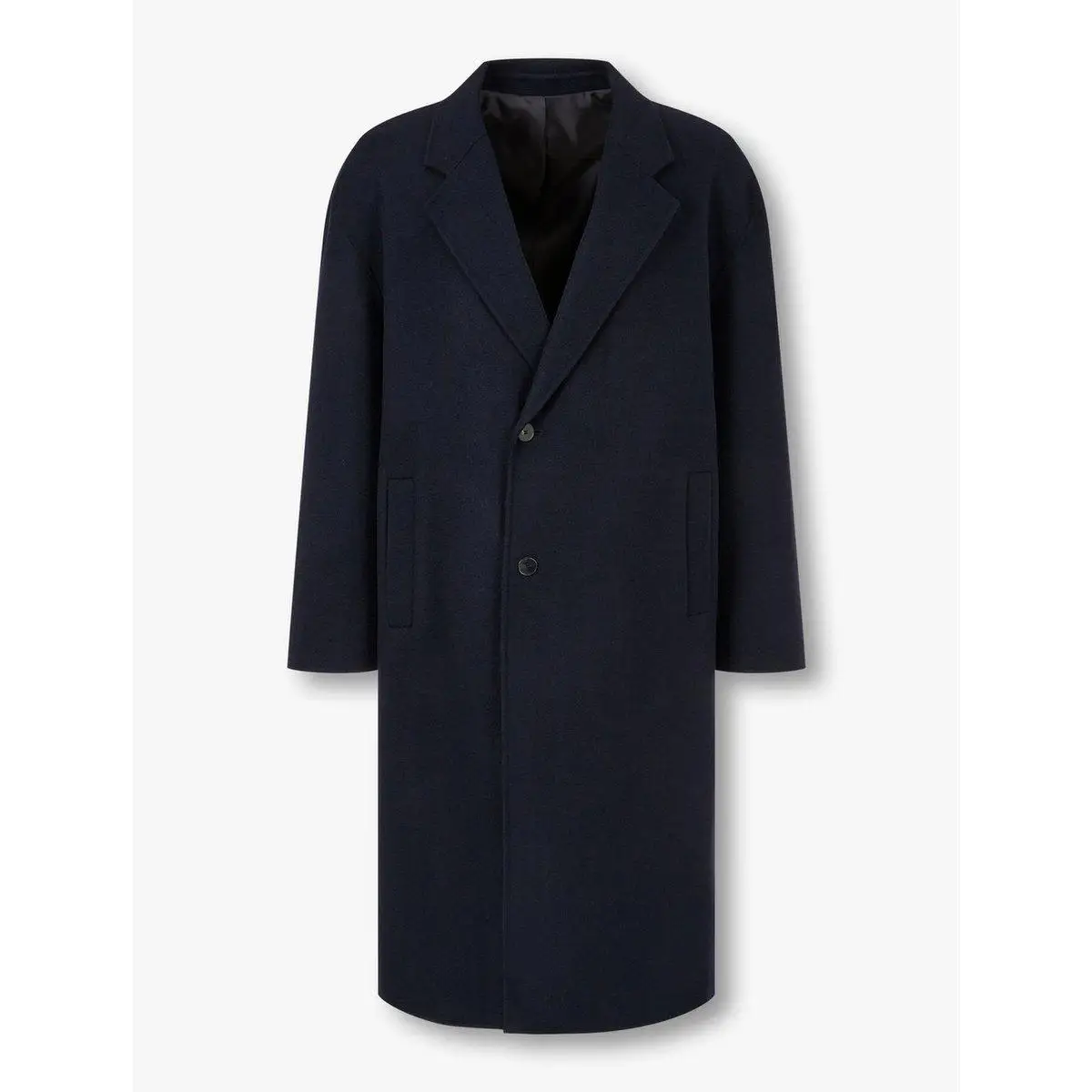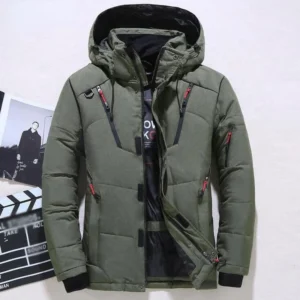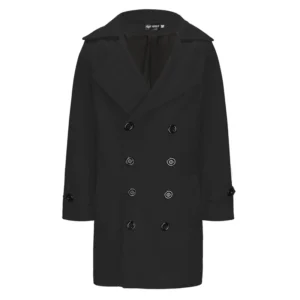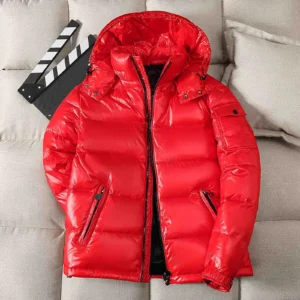Understanding Wool Coat Warmth: Nature’s Winter Guardian
When winter winds howl and temperatures plummet, a question many men ask is simple yet crucial: just how warm are wool coats in winter? The answer begins with wool’s remarkable history as humanity’s trusted cold-weather companion for thousands of years. From ancient shepherds to polar explorers, wool has consistently proven itself as nature’s premier insulating material.
Wool coats remain popular today not merely for their classic appearance, but for their genuine effectiveness against winter’s harshest elements. The natural fibers provide exceptional insulation while allowing your body to breathe – a combination that synthetic materials often struggle to match. This balance between warmth and comfort explains why wool continues to be a cornerstone of winter wardrobes despite the emergence of modern alternatives.
The warmth of a wool coat depends on several key factors: the type of wool used, the percentage of wool in the fabric, the coat’s construction, and its weight. Selecting the right coat length is also crucial – a properly sized coat creates the optimal balance between coverage and mobility, significantly impacting how warm you’ll feel during cold winter days. Understanding the right coat length for your body type helps ensure your wool coat provides maximum protection from the elements.
The Science Behind Wool’s Warmth: How Nature Engineered the Perfect Insulator
Wool’s exceptional warmth isn’t coincidence – it’s the result of millions of years of natural evolution. At the microscopic level, wool fibers are nature’s engineering marvel, with a structure perfectly designed to combat cold:
- Crimped Structure: Each wool fiber naturally bends and twists, creating countless tiny air pockets that trap body heat.
- Microscopic Scales: Wool fibers have overlapping scales (about 500 per inch) that lock together, creating a barrier against cold air.
- Moisture Management: Wool can absorb up to 30% of its weight in moisture without feeling wet, while simultaneously wicking away perspiration.
- Heat Generation: Wool actually produces heat when it absorbs moisture – a process called “heat of sorption.”
- Natural Elasticity: The fibers can bend up to 20,000 times without breaking, maintaining their insulating properties over time.
These remarkable properties explain why high-quality wool coats will keep you warm even in challenging winter conditions. Studies have shown that wool provides effective insulation even when damp – a crucial advantage over cotton and many synthetics that lose most of their insulating properties when wet.
The natural lanolin content in wool also provides some water resistance, helping to repel light snow and rain while maintaining the coat’s warming capabilities. This combination of properties creates a microclimate around your body that regulates temperature and keeps you comfortable in varying winter conditions.
Wool Types and Their Warmth Ratings: Not All Wool Is Created Equal
When it comes to winter warmth, all wool is not created equal. Various wool types offer different levels of insulation, softness, and durability:
| Wool Type | Warmth Rating | Weight | Softness | Durability | Fiber Diameter |
|---|---|---|---|---|---|
| Merino | High | Light | Excellent | Good | 15-24 microns |
| Cashmere | Medium-High | Very Light | Superior | Fair | 14-19 microns |
| Alpaca | Very High | Medium | Very Good | Excellent | 18-26 microns |
| Lambswool | High | Medium | Very Good | Good | 16-30 microns |
| Shetland | Very High | Heavy | Moderate | Excellent | 23-33 microns |
| Virgin Wool | High | Medium-Heavy | Good | Excellent | 18-30 microns |
Merino wool, with its finer fibers, provides exceptional warmth for its weight but costs more than standard wool. Cashmere offers luxurious softness and good insulation despite its lightweight nature, making it ideal for milder winters or layering. Alpaca wool contains hollow fibers that trap more heat, making it among the warmest options available.
The correlation between fiber diameter (measured in microns) and warmth is significant – generally, the smaller the diameter, the softer the wool feels against skin, though not always the warmest. Coarser wools with larger diameters often provide superior insulation but may feel less comfortable without proper lining.
Processing methods also affect warmth. Densely woven wools retain more heat, while looser weaves provide better breathability but less insulation. Understanding these differences helps explain why 100 percent wool coats vary in their winter performance depending on the specific wool type and processing methods used.
Understanding Wool Percentages and Blends: What the Label Tells You
The percentage of wool in your coat dramatically affects its warming potential. When examining coat labels, here’s what different wool percentages typically mean for winter performance:
100% Wool: Maximum natural insulation, excellent breathability, and superior temperature regulation. Pure wool coats typically provide the best warmth for winter but may require more careful maintenance.
80-95% Wool: Still excellent insulation with slightly improved durability or wrinkle resistance from added synthetic fibers. These high-percentage blends retain most of wool’s natural warming properties.
50-79% Wool: Moderate insulation with increased durability and often lower price. A 70 percent wool coat still provides good warmth but may not perform as well in extreme cold without proper layering.
30-49% Wool: Limited insulation with significantly enhanced durability and wrinkle resistance. These lower-percentage blends are often better suited for milder winters or transitional seasons.
Common blend materials include polyester (for durability and wrinkle resistance), nylon (for strength), cashmere (for softness), or acrylic (for softness at lower cost). While these additions can enhance certain properties, they typically reduce the coat’s overall insulating capability.
For adequate winter warmth in moderate to cold climates, look for coats with at least 70% wool content. In very cold regions, 100% wool or high-percentage wool blends with proper lining will provide the best protection against freezing temperatures.
Critical Factors in Wool Coat Construction: Beyond Material Content
While wool percentage matters significantly, construction details often make the difference between a moderately warm coat and an exceptionally warm one:
Fabric Weight and Density
The weight of wool fabric is measured in GSM (grams per square meter) or ounces. Heavier weights typically provide more insulation:
* Light wool (300-400 GSM): Suitable for mild winters or layering
* Medium wool (400-500 GSM): Good for average winter conditions
* Heavy wool (500+ GSM): Excellent for severe cold
Weave Patterns
Different weave styles affect warmth and durability:
* Melton: Tightly woven, heavily felted, and exceptionally warm
* Twill: Diagonal pattern offering good insulation and durability
* Herringbone: V-shaped pattern with moderate warmth and classic appearance
Lining and Interlining
The hidden layers inside your coat significantly impact its warmth:
* Unlined wool: Relies solely on wool’s natural insulation
* Partially lined: Provides some additional warmth while maintaining breathability
* Fully lined: Adds substantial warmth and comfort
* Interlined: Features an additional insulating layer between the wool and lining for maximum warmth
Design Elements
Structural features that enhance warmth include:
* Double-breasted fronts: Create an additional layer of insulation across the chest
* High collars: Protect the neck from cold and wind
* Storm flaps: Prevent wind penetration through button closures
* Coat length: Longer coats provide more coverage and warmth
The perfect winter coat length typically extends to at least mid-thigh for optimal protection against cold while maintaining ease of movement. When combined with proper fabric weight and quality lining, this length provides excellent balance between style and functionality.

Temperature Guidelines: When and Where to Wear Your Wool Coat
Understanding when your wool coat will keep you comfortable is essential for winter preparation. Here’s a practical guide to wool coat performance across different temperature ranges:
45-60°F (7-15°C): Most wool coats, even lighter ones, provide adequate warmth with normal clothing underneath.
30-45°F (-1 to 7°C): Medium-weight wool coats (especially 100% wool) perform well, though light layering may be beneficial in the lower part of this range.
15-30°F (-9 to -1°C): Heavy wool coats with good construction and lining become necessary. Proper layering is recommended, especially with lighter wool blends.
0-15°F (-18 to -9°C): Only the heaviest wool coats with quality insulation and construction will provide adequate warmth. Significant layering becomes essential with any wool coat in this range.
Below 0°F (below -18°C): Most standard wool coats reach their effective limit. Specialized wool coats designed for cold climates with technical features or additional insulation are necessary.
Weather conditions significantly affect wool coat performance:
* Dry cold: Wool excels in these conditions, providing reliable insulation
* Wet snow/rain: Wool retains some insulating properties when damp, but prolonged exposure diminishes effectiveness
* Windy conditions: Tighter weaves perform better; look for windproof lining in very windy regions
Regional appropriateness varies widely – a medium-weight wool coat adequate for an urban East Coast winter might prove insufficient for Midwestern or Northern climates where temperatures regularly drop below freezing for extended periods.
Wool Versus Other Winter Materials: Comparative Performance
Understanding how wool stacks up against other popular winter materials helps determine if it’s the right choice for your needs:
| Feature | Wool | Down | Synthetic Insulation | Leather |
|---|---|---|---|---|
| Warmth-to-weight | Good | Excellent | Very Good | Moderate |
| Wet weather performance | Good | Poor (unless treated) | Excellent | Poor to Good |
| Wind resistance | Moderate | Poor (needs shell) | Moderate | Excellent |
| Breathability | Excellent | Good | Fair to Good | Poor |
| Durability | Excellent | Good | Variable | Excellent |
| Sustainability | Excellent | Good | Poor | Good |
| Formality | Excellent | Poor | Poor | Good |
Wool offers several unique advantages:
* Natural temperature regulation that synthetics can’t match
* Maintains some insulating properties when damp, unlike down
* Classic appearance suitable for formal and business settings
* Biodegradable and renewable material
However, wool has limitations compared to alternatives:
* Not as warm for its weight as quality down insulation
* Generally heavier than down or synthetic options
* Not fully waterproof without treatment
* Typically requires more maintenance than synthetic materials
For those seeking sophisticated winter protection, our collection of men’s wool overcoats offers premium options that balance warmth with timeless style.
Maximizing Your Wool Coat’s Warmth: Layering Strategies
Strategic layering can significantly enhance your wool coat’s warmth performance in challenging winter conditions:
Base Layer
* Opt for thermal or merino wool undergarments that wick moisture away from your body
* Avoid cotton as it retains moisture and can make you feel colder
* Ensure base layers fit snugly without restricting movement
Mid Layer
* Wool sweaters or fleece provide excellent additional insulation
* Lightweight down or synthetic vests add core warmth without bulk
* Consider cashmere or merino sweaters for warmth without excessive thickness
Outer Layer (Your Wool Coat)
* Ensure proper fit that allows for layers underneath while maintaining a clean silhouette
* Button or zip completely to prevent heat loss
* Select appropriate length for desired coverage
Accessories
* Wool scarves create an effective seal around the neck where coats often leave gaps
* Gloves and hats prevent significant heat loss through extremities
* Consider thermal insoles for additional warmth during extended outdoor periods
Mastering the art of layering with a wool coat involves balancing insulation needs with your desired aesthetic. For professional settings, thinner merino or cashmere layers maintain a refined silhouette while adding meaningful warmth. For casual situations, thicker knits or technical mid-layers can maximize thermal efficiency.

Buying the Right Wool Coat: A Winter Warmth Checklist
When investing in a wool coat for winter warmth, use this comprehensive checklist to ensure you select one that meets your climate needs:
Material Assessment
– [ ] Verify wool percentage (aim for at least 70% for good warmth, 100% for maximum insulation)
– [ ] Identify specific wool type (merino, lambswool, etc.)
– [ ] Check fabric weight/density (heavier generally means warmer)
– [ ] Evaluate the weave pattern (tighter weaves provide better insulation)
Construction Quality
– [ ] Examine lining material and coverage (full lining enhances warmth)
– [ ] Check for interlining or additional insulation layers
– [ ] Assess seam construction (tight, well-finished seams prevent heat loss)
– [ ] Verify button/closure quality and coverage (gaps allow cold air entry)
Design Features
– [ ] Consider coat length for desired coverage and warmth
– [ ] Look for protective features (high collar, storm flaps, etc.)
– [ ] Evaluate sleeve design (adjustable cuffs help seal in warmth)
– [ ] Check collar design for neck protection
Practical Considerations
– [ ] Match coat weight to your local winter conditions
– [ ] Consider versatility across different settings (formal/casual)
– [ ] Assess care requirements and maintenance needs
– [ ] Determine if the weight is comfortable for extended wear
While price often correlates with quality, focusing on specific features rather than brand names often yields better value. A well-constructed coat from our men’s wool coats collection provides excellent warmth without unnecessary premium pricing.
Caring for Your Wool Coat: Preserving Warmth and Longevity
Proper maintenance ensures your wool coat maintains its warming properties season after season:
Regular Brushing: Use a soft clothes brush to remove surface dirt and debris before it becomes embedded in the fibers. Brush in the direction of the nap.
Spot Cleaning: Address small stains immediately with a damp cloth and mild soap, then blot dry. Avoid rubbing, which can damage fibers.
Professional Cleaning: Have your wool coat professionally dry-cleaned at the beginning and end of each winter season. Excessive cleaning can diminish natural oils that contribute to insulation.
Proper Storage: During off-seasons, store on a shaped hanger in a breathable garment bag. Never use plastic covers, which trap moisture and can promote mildew.
Moth Prevention: Use cedar blocks or lavender sachets rather than mothballs, which can leave unpleasant odors.
Common mistakes that compromise warmth include improper drying (never use direct heat), improper hanging (which stretches the fabric), and ignoring small repairs that can lead to larger issues. With proper care, a quality wool coat should maintain its insulating properties for many years, making it an excellent investment for winter comfort.
Our extensive collection of men’s winter coats includes options designed for easy maintenance without sacrificing warmth or style.
Beyond Warmth: Additional Benefits of Choosing Wool Coats
While warmth remains the primary consideration for winter coats, wool offers several additional advantages worth noting:
Sustainability: Wool is a renewable, biodegradable natural resource with a significantly lower environmental footprint than petroleum-based synthetics. A quality wool coat can last decades, reducing consumption.
Durability: Wool fibers can bend up to 20,000 times without breaking and naturally resist tears and abrasion, resulting in exceptional longevity compared to many alternatives.
Odor Resistance: Wool’s natural antimicrobial properties prevent the growth of odor-causing bacteria, meaning wool coats require less frequent cleaning than synthetic options.
Versatility: Few materials transition as seamlessly between formal and casual settings as wool, making it ideal for professionals who need one coat for multiple environments.
Fire Resistance: Wool naturally resists flame, providing an additional safety benefit that many synthetic materials cannot match.
The choice between short versus long coat styles affects not only warmth but also versatility and formality – longer coats generally offer more protection and formal appearance, while shorter styles provide greater mobility and casual versatility.
Mens Heavy Winter Coat, Mens Insulated Coat, Mens Parka Coat
Price range: $175.52 through $237.36 Select options This product has multiple variants. The options may be chosen on the product pageMens Big and Tall Winter Coats, Mens Down Coat, Mens Hooded Winter Coat, Mens Puffer Coat
Price range: $126.44 through $217.01 Select options This product has multiple variants. The options may be chosen on the product pageMens Big and Tall Winter Coats, Mens Hooded Winter Coat
Price range: $80.32 through $106.68 Select options This product has multiple variants. The options may be chosen on the product pageMens Double Breasted Pea Coat, Mens Wool Blend Coat, Mens Wool Pea Coat
Price range: $136.84 through $157.36 Select options This product has multiple variants. The options may be chosen on the product pageMens Cashmere Overcoat, Mens Hooded Winter Coat, Mens Wool Blend Coat
Price range: $128.72 through $139.68 Select options This product has multiple variants. The options may be chosen on the product pageMens Hooded Winter Coat, Mens Insulated Coat, Mens Puffer Coat, Mens Quilted Coat
Price range: $139.88 through $177.72 Select options This product has multiple variants. The options may be chosen on the product page
Common Questions About Wool Coat Warmth Answered
Are wool coats warmer than down jackets?
Down jackets typically offer better warmth-to-weight ratio than wool, but wool provides better insulation when wet and generally offers superior wind resistance without additional shell layers. For extremely cold, dry conditions, quality down often performs better, while wool excels in moderately cold, damp, or windy environments.
Can wool coats be too warm for some winter climates?
Yes, heavy wool coats can become uncomfortable in milder winter regions or during temperature fluctuations. For areas with winter temperatures rarely below freezing, lighter wool blends or unlined wool coats often provide better versatility and comfort.
How can I tell if a wool-blend coat will be warm enough?
Beyond the wool percentage, check for coat weight (heavier is warmer), construction (full lining, interlining), and weave density (tighter weaves retain more heat). A 70% wool coat with quality construction and proper lining can often outperform a poorly constructed 100% wool option.
Is it worth paying more for higher wool content?
Generally yes, especially in colder climates. Higher wool content typically provides better insulation, improved moisture management, and greater durability. However, the quality of the specific wool and construction details matter more than simply achieving 100% wool content.
How does a wool peacoat compare to a wool overcoat for warmth?
Wool overcoats typically provide greater warmth than peacoats due to their longer length (mid-thigh to knee versus hip-length) and often heavier fabric. Peacoats, while still warm, leave more of the body exposed and are generally better suited to mild to moderate winter conditions or active lifestyles requiring greater mobility.
Our selection of men’s black wool coats includes both peacoat and overcoat styles to suit different climate needs and personal preferences.
Specialized Wool Coat Options for Extreme Cold Conditions
For those facing particularly harsh winter environments, specialized wool coat designs offer enhanced protection against extreme cold:
Double-layer wool coats feature two complete layers of wool fabric, creating a substantial thermal barrier suitable for temperatures well below freezing. These premium garments often incorporate windproof membranes between layers for additional protection against cutting winds.
Bonded wool technology fuses wool with thin technical materials to create fabrics that maintain wool’s natural insulation while adding water and wind resistance. This innovation preserves the elegant appearance of wool while significantly enhancing performance in challenging conditions.
Technical wool blends incorporate high-performance natural fibers like qiviut (muskox wool) or specialty sheep breeds from extreme climates. These exceptional materials provide remarkable warmth-to-weight ratios surpassing standard wool varieties.
For the most demanding environments, consider coats featuring:
* Extended collars that protect the face when fully raised
* Interior snow skirts that prevent updrafts
* Reinforced shoulder layering for added insulation where body heat escapes
* Hidden ribbed cuffs that create complete seals at the wrists
Our men’s heavy winter coat collection includes specialized options designed specifically for extreme winter protection without compromising on sophistication.
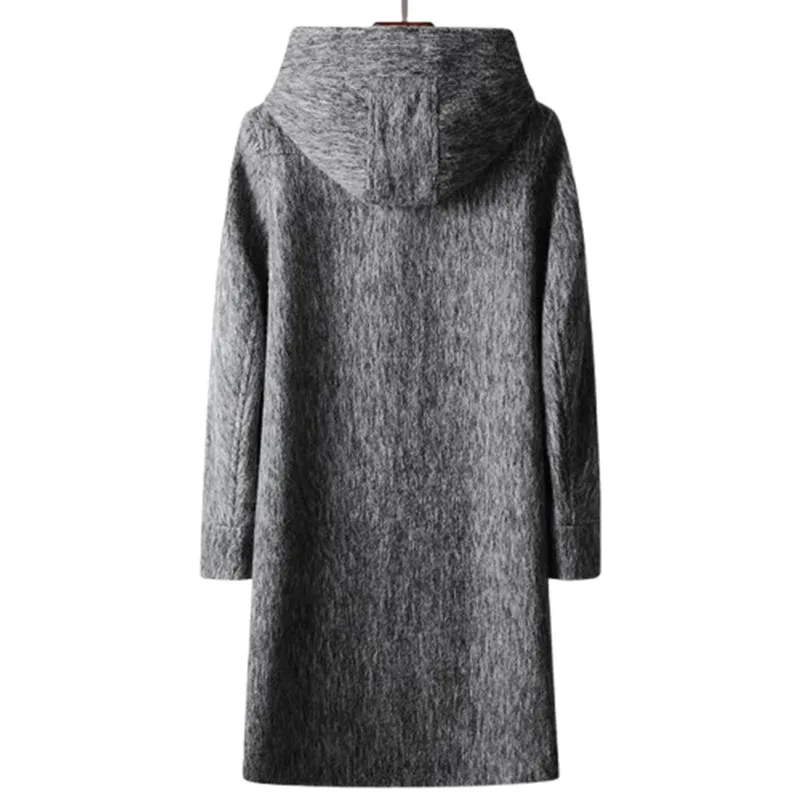
Conclusion: Is a Wool Coat Right for Your Winter Needs?
Wool coats offer remarkable winter warmth through a combination of natural fiber properties, quality construction, and thoughtful design. Their ability to insulate while managing moisture makes them exceptional performers in most winter conditions, particularly in temperatures ranging from mild to moderately severe.
The ideal wool coat for your needs depends on your local climate, typical activities, and personal preferences. For urban environments with temperatures rarely below 20°F (-7°C), a well-constructed 100% wool coat with proper lining will likely provide excellent protection. For more extreme conditions, specialized wool coats with technical enhancements or strategic layering become necessary.
When assessing your options, focus on wool type, fabric weight, construction quality, and design features that align with your specific needs rather than simply seeking the highest price point. Understanding your local climate and following the men’s coat length guide will help you select a wool coat that delivers optimal warmth and comfort throughout the winter season.
A quality wool coat represents not just warmth but an investment in winter comfort that can last for many years with proper care – making it one of the most practical and sophisticated additions to a winter wardrobe.

